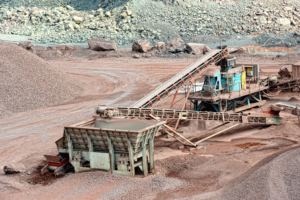Qantas’ capex bill: The company is coping with a $12bn+ bullet for now, but will it eventually bite shareholders?

Qantas‘ capex needs are bubbling under the surface, but have not gone away. Former CEO Alan Joyce’s tenure came to an unceremonious end last year. There have been many criticisms of his tenure including centralisation of decision-making around himself, his using of the airline for social causes and relations with employees, both mainline staff and those at subsidiary Jetconnect.
But one was that he has underinvested in the group’s fleet and that his successor will pick up the bill. This concern has been put to the side now that there are firm orders that will renew its fleet. But the bill will need to be paid.
Qantas’ capex bill is an issue
Since Vanessa Hudson took the top job, criticisms about the Alan Joyce era are no longer applied to the present as she has been seen to have been taking some actions. But as easy as it is to introduce priority boarding or new app features, obtaining new aircraft is not so easy.
Qantas’ average fleet age is 16 years, well above global peers, such as Cathay Pacific, Emirates and Qatar Airways. This age is exactly the same as Alan Joyce’s total tenure. He was never much of a plane buyer, inheriting an order of 65 787s, of which only 25 will be delivered.
To be fair, Joyce has undertaken fleet refurbishment and made orders for the new domestic fleet (A220s and A321s) and for Project Sunrise aircraft (A350s), but much of Qantas’ capex bill will be paid after his departure (specifically FY25-FY27). Although Joyce made a big Airbus order for Jetstar in 2011, this was deferred a number of times.
Let’s look at Qantas’ order book right now:
- 24 A350s (12 of which are Project Sunrise aircraft and will come with one extra fuel tank)
- 12 787s (8 of the 787-10 variety and 4 of the 787-9 variety)
- 29 A220s
- 20 A321XLRs
In addition to this, it has ordered 14 additional Dash 8 turboprops. The burden will not be substantially high because these will be used aircraft and small turboprops cost less to begin with, although they won’t be free. Looking at cost:
- 24 A350s cost US$8.8bn before accounting for the modifications needed on the 12 of them;
- 8 787-10s cost US$2.8bn
- 4 787-9s cost US$1.2bn
- 29 A220s cost US$2.7bn
- 20 A321s cost US$2.6bn
Add it all up and that gets to US$18.1bn, or A$26.6bn. Not a cheap exercise. Yes, airlines typically get discounts for ordering in bulk, but even halving the prior figures still gets to over A$13bn, more than 6 times its annual profit before tax ($2bn in FY24). And this is assuming no options are exercised – which they will have to be in order to replace the fleet entirely.
One issue with aircraft manufacturers is that supply chain issues are delaying production and deliveries so some of Qantas’ capex bill could be spread out. Even so, an advertising campaign boasted that Qantas would receive ‘1 new aircraft every 3 weeks over the next 3 years’. According to its cash flow statement, Qantas spent US$2.56bn in FY23 and US$2.67bn in capex during FY24.
So some of the capex bill has been paid already, but payment will be an ongoing process over the next few years. One thing to keep in mind that those figures are investments in all the company’s plant, property and equipment, not just planes. Qantas has not specifically broken down how much of that has been spent of planes, although it is fair to imagine some of it would be.
Qantas’ capex will could cost it further
Perhaps Qantas’ capex isn’t even an issue, anymore. The company is experiencing rapid demand for its routes and profiting accordingly. Even though complaints have been high, people have ultimately been voting with their wallets – or at least enough have to prevent an impact. But most important of all, the company will be able to put the Alan Joyce era behind it.
Nonetheless, these deliveries will take time to come to fruition, and could be delayed. The company could be missing out on opportunities in the mean time that would be possible had it invested more in its fleet earlier. Consider the fact that last southern summer, United was the largest carrier between Australia and the USA. Qantas was and is so constrained, it has to use aged A330s between Brisbane and Los Angeles that don’t even have a proper crew rest for flight attendants. United, however, was and is using modern 787s and refurbished 777s, both containing Polaris business class seats.
Admittadly, United won’t be operating as many routes this year with State government subsidiaries running out. But that’s the flexibility that comes with having a larger fleet. It has 71 787s – and ordered another 100 more last year – along with nearly 100 777s.
Qantas’ capex bill, if unpaid, will lead to it ceding market share to its competitors on key international routes. If the service (particularly in premium cabins) isn’t worth the premium price, people take their business elsewhere. For now this is a non-issue, but if the downturn in the economy hits the company’s bottom line, then it may just take 1 UBS broker note with a high capex estimate to send shares downwards.
Never invest in airlines!
Some airline stocks have mostly done well post-pandemic – particularly premium airlines. But the fact that some (namely, low cost carriers) have struggled despite strong demand, as well as the issue of Qantas’ capex bill, illustrates that they operate in a very cyclical environment and that these businesses have high capex requirements. Therefore, it is more difficult to make money from them compared to other businesses. As one famous investor once said … “Never invest in airlines” ~ Warren Buffett.
What are the Best ASX Stocks to invest in?
Check our buy/sell tips
Blog Categories
Get Our Top 5 ASX Stocks for FY26
Recent Posts
Channel Infrastructure NZ (ASX:CHI): Another Kiwi company just joined the ASX, but this one is the nation’s largest fuel supplier
Last Friday, Channel Infrastructure NZ listed on the ASX as a dual-listing. It is unlike the bulk of Kiwi companies…
Arafura Rare Earths (ASX:ARU) Nears FID With $1.35 Billion Secured- Time to Buy?
Arafura Rare Earths (ASX: ARU) presents one of the most puzzling setups on the ASX right now. The company has…



